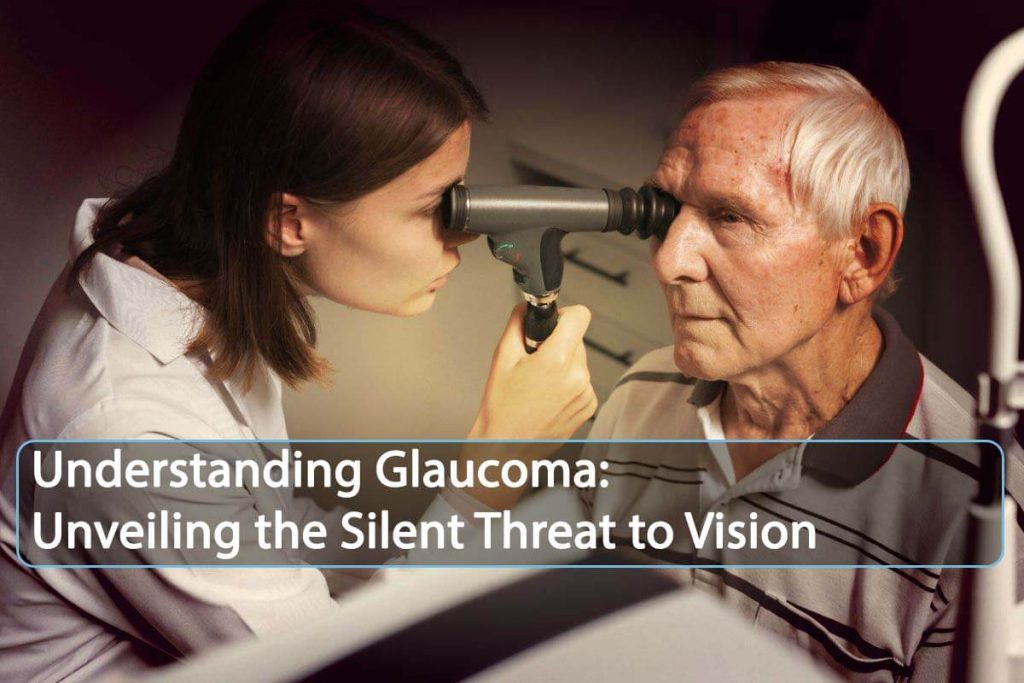Glaucoma, also colloquially known as “black water,” refers to elevated eye pressure. This insidious eye disease typically advances without noticeable symptoms. Despite its gradual progression, if left undiagnosed and untreated, it poses a significant risk of permanent blindness. Early detection and timely intervention are crucial in managing glaucoma and preserving long-term visual health.
İçindekiler
What is Eye Pressure (Glaucoma)?
Glaucoma is an eye disease characterized by the abnormal elevation of intraocular pressure, leading to damage to the optic nerves. This condition develops as fluid accumulates within the eye, exerting indirect pressure on the optic nerves and causing progressive damage over time. As intraocular pressure rises, the individual’s vision is adversely affected, emphasizing the critical link between elevated eye pressure and vision impairment in glaucoma. Early detection and management play pivotal roles in preserving optic nerve health and mitigating the risk of vision loss associated with this condition.
Understanding Glaucoma Risk Factors: Necessity for Vigilant Monitoring
While glaucoma can affect individuals across all age groups, its prevalence is notably higher in those aged 40 and above. As a preventive measure, it is essential for individuals in older age brackets to undergo annual eye pressure checks. Those with a family history of eye pressure are strongly advised to prioritize more frequent eye examinations. This proactive approach ensures early detection and timely intervention, contributing to the effective management of glaucoma risks.
Identifying Vulnerabilities: Understanding Those at Higher Risk
Individuals with certain characteristics face an elevated risk of developing eye pressure-related issues. This includes individuals with a history of eye injuries, those experiencing myopia (difficulty seeing clearly at a distance), smokers, and individuals with diabetes. Given the increased likelihood of elevated eye pressure in these conditions, it is advantageous for individuals with higher risk factors to undergo more frequent eye examinations. Regular monitoring, including measurements of intraocular pressure, facilitates early diagnosis and proactive management, ensuring timely interventions for optimal eye health.
Glaucoma, often asymptomatic in the majority of patients, manifests insidiously, especially in its most prevalent form, open-angle glaucoma. In the early stages, some individuals may experience morning headaches, occasional blurred vision, the perception of light rings at night, and eye discomfort while watching television. Notably, ocular hypertension becomes apparent when substantial vision loss occurs, typically in the advanced stages of the disease.
Open-Angle Glaucoma: A Silent Progression: This common glaucoma variant may not exhibit any symptoms until its final stage, where it induces serious vision and visual field loss. Without intervention to halt disease progression, complete blindness may ensue.
Angle-Closure Glaucoma: Recognizing Acute Manifestations: Less common but more acute, angle-closure glaucoma may present with sudden attacks of increased eye pressure. During these glaucoma attacks, individuals may experience severe eye and headaches, blurred vision, moire vision, as well as symptoms like nausea and vomiting. Awareness of these acute manifestations is crucial for prompt medical attention and intervention.
Diagnosing Glaucoma
The diagnosis of glaucoma involves conducting visual field tests and eye tomography, specifically optical coherence tomography (OCT), in individuals with elevated eye pressure measurements. Regular examinations administered by an ophthalmologist stand as the most effective method for early glaucoma detection. Consistent monitoring, encompassing comprehensive testing, ensures timely identification and intervention, enhancing the prospects of successful management for individuals at risk of or affected by glaucoma.
Significance of Timely Identification: Preserving Vision Health
Given the insidious nature of glaucoma and its irreversible impact, early diagnosis holds paramount importance. Detecting glaucoma in its initial stages enables timely treatment interventions, preventing irreversible damage to vision cells. Proactive measures in the form of early diagnosis not only safeguard existing vision but also contribute to the overall preservation of long-term eye health. Therefore, recognizing and addressing glaucoma at its outset is crucial for mitigating potential vision impairment and ensuring optimal outcomes in treatment.
While complete elimination of eye pressure (glaucoma) is challenging once it occurs, effective control and prevention of vision loss progression are achievable with suitable treatment approaches. The primary treatment involves eye drops, proving successful in many cases. In instances where drops alone are insufficient, alternative options such as laser or surgical interventions may be considered.
Open-Angle Glaucoma: Tailoring Treatment: The initial approach for open-angle glaucoma involves medications designed to lower intraocular pressure. Surgical interventions become viable for cases resistant to medications or based on the specific glaucoma type. In some instances, multiple surgeries may be performed on an individual, emphasizing the tailored nature of treatment.
Urgent Measures for Angle-Closure Glaucoma: Immediate initiation of treatment is imperative for angle-closure glaucoma crises. Laser treatments are commonly employed for cases where glaucoma is uncontrolled, providing a rapid and effective intervention.


The Benefits of Wearing Sunglasses and How to Choose Them
Wearing sunglasses plays a vital role in protecting our eye health. However, choosing the wrong [...]
Devamını OkuyunSep
The Effects of Eyelash Trimming on Eye Health
Trimming eyelashes has recently gained popularity on social media, especially among men. While it may [...]
Devamını OkuyunSep
The Benefits of the Mediterranean Diet for Macular Degeneration
Diet plays a significant role in slowing the progression of macular degeneration, and the Mediterranean [...]
Devamını OkuyunApr
What is Dry Eye? Tips to Protect Yourself from Dry Eyes
Insufficient tear production can lead to discomfort and reduce your eyes’ ability to defend against [...]
Devamını OkuyunJan
Understanding the Structure of the Eye and Its Functions?
Understanding the anatomy of the eye is crucial for diagnosing and treating various eye conditions. [...]
Devamını OkuyunJan
Causes and Treatment of Eye Floaters
Occasionally, individuals may notice floating objects in their field of vision. These can take various [...]
Devamını OkuyunMay
What is Vitreous? How is Vitreous Dysfunction Treated?
Vitreous, derived from the Latin term meaning “glassy,” is a clear gel found between the [...]
Devamını OkuyunMay
Vision Wellness Essentials: Simple and Effective Tips for Eye Health
Our eyes, vital and health-sensitive organs, demand special care to combat conditions such as eye [...]
Devamını OkuyunJan